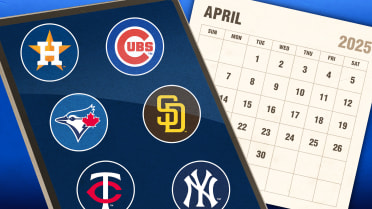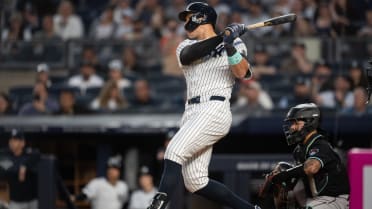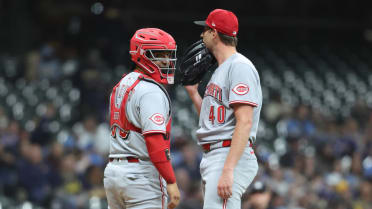No one would blame Zack Greinke for remembering July 26, 2015, as the end of something -- an historic streak. And it's true, his run of scoreless frames came to an end that day against the Mets, after 45 2/3 innings had passed without a runner crossing home on his watch. The batter who did end up finally crossing home was Kirk Nieuwenhuis, who had reached on a hit-by-pitch. Later, Greinke would allow his second run of the game by plunking recent callup Michael Conforto with the bases loaded. And then, unbeknownst to anyone at the time, Greinke would immediately embark on a different streak -- historic in its own right, if less ballyhooed.
Since then, Greinke has signed a six-year, $206.5 million deal with the D-backs, pitched in two postseasons and hurled 445 1/3 innings over 70 regular-season starts. He has not, however, hit any other batter with a pitch.
Not just the longest streak going, it's the longest any active player has put together, topping a 391-inning Yovani Gallardo run from 2011-13 and 306 innings of Greg Holland relief work. It already ranks among the 60 longest spans on record without a hit-by-pitch, and if Greinke were to put together another full season of plunk-less work, it could rise into the top 15.
While he has a long way to go to even catch Tom Seaver's fourth-place streak (783 2/3 innings) -- much less Larry Benton's all-time best 1927-33 run (1,072 1/3 innings) -- Greinke's aversion to the HBP might surprise legends like Pedro Martinez, who accepted a modicum of free bases allowed in exchange for collective hitter discomfort.
Longest streaks without a HPB (active pitchers)
- Greinke (July 2015-present), 70 starts, 445 1/3 IP
- Gallardo (April 2011-April 2013), 63 starts, 391 IP
- Bartolo Colon (May 2012-April 2014), 49 starts, 313 IP
- Holland (August 2011-August 2017), 315 games, 309 IP
- Casey Fien (Aug. 2012-June 2017), 283 games, 263 2/3 IP
It also feels surprising, considering Greinke's proclivity for keeping the ball outside the strike zone. With a fastball that averages 90.8 mph, the success he's had over the past five seasons has largely been built on chase swings -- hitters taking the bait and hacking at sliders or changeups as they slice even further away from their barrels. But then again, he lives juuust off the edges.
And importantly, Greinke lives there with a slider, a curve and a changeup. All pitches best served low.
If you think about this long enough, you'll come to a somewhat intuitive realization: Torsos are bigger and less nimble "targets" than legs. So while Greinke frequently places pitches off the plate, he rarely throws wide pitches that are also above the belt.
Now, combine that with some more basic logic: You'd think faster pitches are more likely to get to a batter before he can get out of the way, but what really does it is late horizontal movement. When a righty is facing a right-handed batter, the two-seam or sinker is the pitch most likely to result in a HBP, according to Statcast™, with changeups coming in second.
Greinke decreased his two-seam usage prior to the 2015 season, down to about 10 percent from 20 percent in previous seasons. The bulk of that void was filled in by sliders, which break in the opposite direction and tend to be thrown outside. And while Greinke still throws his change plenty on the whole, it gets the vast majority of its play against lefties -- when it darts away from the hitter. He only threw it 4.3 percent of the time against righties in 2017.
The question, then, is whether Greinke is better off this way. Hitters surely don't know the specific number of innings he's gone without hitting one of them, but they are certainly aware that there are fewer bruises in their future when facing him. The actual bases given up generally pale in comparison to the effects of the mind game, the sum of strikes and bad swings gained or lost.
What Martinez, Randy Johnson and others once gained from intimidation, from instilling an instinct to step away or hesitate, Greinke seems to earn in the even less tangible currency of confusion. Greinke earns called strikes on borderline pitches. He induces swings on offerings that aren't even borderline. His 32.9 percent chase rate was sixth among hurlers who threw at least 1,000 pitches in 2017. In '16, he ranked fourth. Hitters do vastly less damage on chase swings -- and, in fact, missed altogether on 46.5 percent of those swings against Greinke in '17.
Like the miniscule-but-present threat of a brushback or plunking, Greinke's bending of the zone is something for the back of a hitter's mind.
When his scoreless streak concluded on that day in July 2015, Greinke expressed some relief that he wouldn't have to answer any more questions about it. He has a good while before anyone is likely to ask questions about his run without hitting a batter -- but it nonetheless has a small part to play in the game that occurs between the mound and the plate.
Zach Crizer is a social media coordinator for MLB.com.



